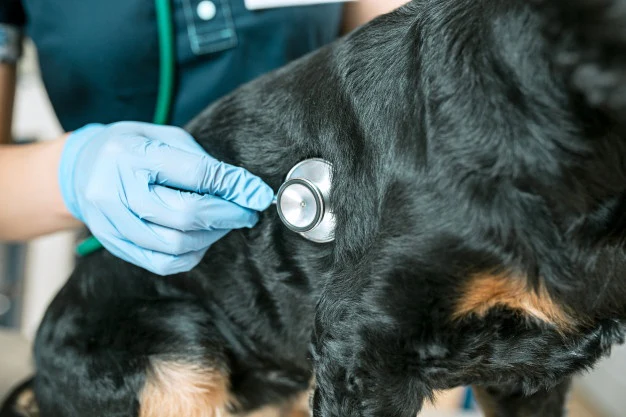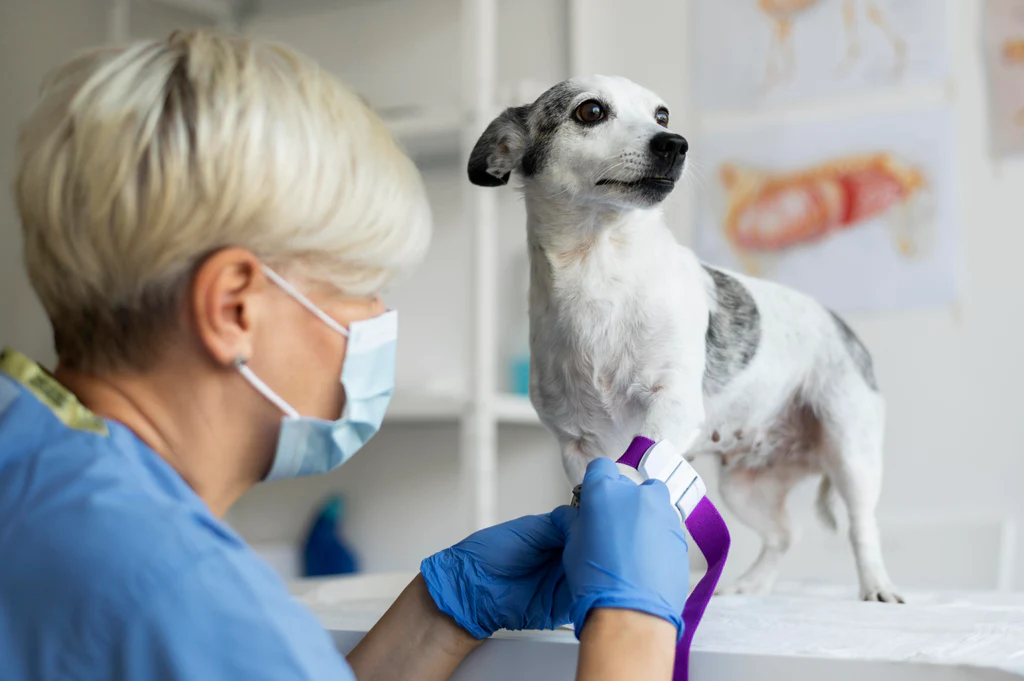Just like humans, dogs are also in danger of suffering from arthritis. It can be equally as painful for them too.
So if you have a pet that may have arthritis, it is better to consult your vet before it is too late.
But what do you mean by arthritis?
Arthritis mainly refers to the inflammation of the joints.
This problem is common among dogs of all breeds, shapes, and sizes and can be painful, causing stiffness and discomfort.
As a result, the movement gets restricted and causes the bones in the joint to rub against each other.
This can further cause discomfort and pain, causing even more damage to the cartilage, stiffness and restricted movement among the dogs.
Septic Arthritis In Dogs: What Is It?

Septic arthritis is a type of infection in one or more joints that is caused by certain microorganisms.
Usually, the fluid present between the joints helps to lubricate it.
This fluid is known as joint or synovial fluid.
The joint fluid is generally sterile, and no germs will be found if taken and cultivated in the lab.
However, microbes can be found in the fluid of an afflicted joint in this type of arthritis.
Infectious arthritis usually affects just one joint; however, it can sometimes affect many joints.
The affected joints differ based on the bacterium that caused the infection and the dog’s preexisting risk factors. Infectious arthritis is another name for septic arthritis.
Septic arthritis is a painful condition that can develop fast.
It’s a highly deadly illness that may strike at any age.
Therefore, it must be addressed as an emergency in a hospital as quickly as possible.
Septic arthritis in dogs is mainly caused by a bacterium from an open wound oran infected cut.
The bacteria travel to their joints through the blood supply andbecome infected.
This type of arthritis could be caused by any skin infection, virus, or bacterium that gets into the body through an existing site of infection or surgery.
Hence, it is also known as infectious or bacterial arthritis.
Other joints in the body are likely to get affected, too, because of septic arthritis.
If your dogs have been diagnosed with septic arthritis, they should be treated as soon as possible to avoid long-term damage and other problems.
The vet may even suggest some joint supplements for dogs to keep their bone health in good condition.
Symptoms of Septic Arthritis in Dogs

Septic arthritis among dogs is more common in bigger breeds and males of all ages than in females.
Among the signs and symptoms are acute swelling of the joints, lethargy, warmness in the joint, malaise, painful joints, fever, and depression.
Types
Your veterinarian will run a culture on the fluid of the damaged and painful joint because this type of arthritis in dogs is mainly caused by bacteria, fungus, or viral infection.
Causes of Septic Arthritis in Dogs

Several factors contribute to the development of septic arthritis in dogs.
This disease is more common in dogs with a weakened immune system or those that have insulin-dependent diabetes.
If the dog has any open wounds or operations, keep a watch on them because they are a major cause of this form of arthritis.
The causes may include the following:
- Bacterial infection from a different
- source in their body.
- Infection after a bite.
- Infection after any surgery.
- Infection due to an open wound or injury.
- Fungal infection
Diagnosis of Septic Arthritis in Dogs

You might want to call a veterinarian once you notice signs of septic arthritis in the dog to confirm a diagnosis and obtain adequate and prompt treatment.
The veterinarian will examine the dog’s whole medical history, including any mishaps that resulted in wounds, to identify this illness.
Then, a physical examination and a thorough blood test, biochemistry profile, and urine tests will be performed by the veterinarian.
This is to see whether your dog has any inflammation or illness.
The veterinarian will conduct imaging procedures on the inflamed and painful joints, and fluid from the joint will be taken to be checked for any bacterial infection.
During the diagnosis phase, the fluid culture will be an essential test.
During this examination, the dog may need to be anesthetized.
This process will disclose the number of inflammatory cells, the color of the fluid, and the bacterium kind.
All of the following tests and inspections will provide the veterinarian with a clear image of treating your pet efficiently.
Treatment of Septic Arthritis in Dogs

The kind of bacteria or fungus present in the swollen joints determines the treatment for septic arthritis in dogs.
In addition to the therapies listed below, the joint is routinely drained and cleaned up over time.
- Antibiotics- The vet will prescribe antibiotics for counteracting and treating the infection when the type of fungi or bacteria is properly determined.
- Arthroscopy- The arthroscopy is the scope inserted in the joints to get a closer look at the damaged joint.
Recovery of Septic Arthritis in Dogs

As far as recovery and care are concerned, it’s critical to ensure that the disease’s primary cause is adequately addressed.
In addition, you may want to use hot or cold packs on the joint to aid in its healing. This can aid in the smooth flow of blood.
Even if you have to kennel him while you’re gone, keep the dog contained and under your careful observation.
Keep outdoor potty trips to a minimum and only allow the dog to roam about gently for some time while he recovers.
Certain joint supplements for dogs can also help to improve the situation to a great extent.
If your dog has a catheter, follow the instructions on how to care for it at home.
Conclusion
Veterinarians will give you proper instruction on how to properly care for the catheter that has been implanted in your dog’s afflicted joint if required.
Although many dogs react effectively to antibiotic treatment, the illness may be more resistant in a few cases, necessitating long-term antibiotic treatment.
Antibiotic therapy normally works within 24 – 48 hours for affected dogs; however, it might take up to 4 weeks or more for others.
Even if the symptoms go away fast, it’s critical to finish the entire course of antibiotics to avoid a recurrence of the illness.






